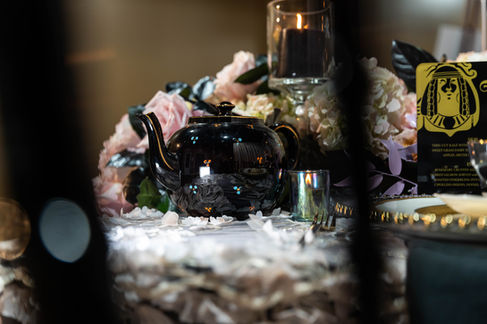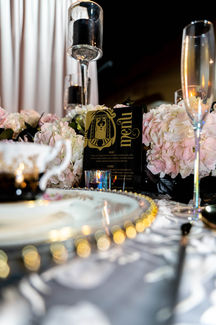
GALLERY O - MACON, GEORGIA
CINEMATORGRAPHY IRIS FILMS
PHOTOGRAPHY LAJOY PHOTOGRAPHY
QUEENS OF HEARTS
One of the most striking attempts at torturing and breaking enslaved Black women was to rip a newborn from their arms, even after a birth that followed a 12-hour cotton picking stint in a 105-degree Mississippi, Alabama, or Georgia sun. Only then to nurse the slave master’s child. Such horrors did not deter the Harriet Tubmans from defying bloodthirsty hounds--egged on by equally bloodthirsty slave masters--to free their people. What followed was an abolitionist movement, then a civil rights movement carried on the shoulders and backs of Black women--who comforted their men, nurtured their children, scrubbed white people’s floors, and planted their gardens all while pleading to God for a lifting of an extraordinarily heavy burden. The first self-made woman millionaire was a Black woman. Now, the first woman to hold the second highest executive office in this country is also a Black woman--a feat only made possible by the Fannie Lous, the Ella Bakers, the Shirley Chisholms, the Barbara Jordans, and many other unsung mothers, daughters, and sisters. If power, in fact, belongs to those who take it, then Black women may very well be on track to become the most powerful in this so-called great nation. The Queens who have stolen our hearts may be the Queens that still these ever-treacherous social, political, and religious rivers.
GREENWOOD
More than 100 years ago, the Greenwood District of Tulsa, Oklahoma stood as a miraculous testament to the audacity and wherewithal of Black men, women, and children who migrated there in the early 1900s seeking a better life than the one that they experienced in the Deep South. From the pioneering efforts of wealthy Black landowner O.W. Gurley, sprang an oasis of Black businesses, schools, churches, restaurants, and arts havens. It was a mecca where Black families owned airplanes and estates–no more than 50 years after the end of slavery. In June, this illustrious version of Greenwood would have been 115 years old had it not been decimated by a white mob following the un-credible jailing of Dick Rowland, a Black man who had allegedly assaulted a white woman. Black residents clashed with white mobs seeking to take out their own personal justice on Rowland, ultimately resulting in the torching of Greenwood and deaths of at least 300 residents. Greenwood, also known as The Black Wall Street, is not what it once was, in spite of ongoing efforts to revive it. Above all, it lives as a spirit, a guide to what once was and what can be; and a lesson: WE are all WE need to thrive.
FOOTPRINTS
Eleven- and 14-year-old girls were bombed to death. Little boys were kidnapped from their homes and left for dead in muddy rivers. Women were beaten in the streets, left to nurse stinging wounds in cold, hard jails. Men were dragged from trucks on dirt roads before being lynched. A peculiar terror that took hundreds of years to amend, the physical, mental, and economic terrorism that has taken place against Black people in America is nothing short of genocide that has never been appropriately defined or reparated as such. God bless the souls of the pioneers, the foot soldiers, the supporters, the loyalists of the American Civil and Human Rights Movement. Where would we be had it not been for them? It is a wonder that America has not been burned to the ground. The movement has not stopped; it continues but looks different today. We have no other option, but to keep striving for a “more perfect union” that properly acknowledges all humankind as unique, Divine expressions of our Creator. It’s the only way we will see the Promised Land.
STRANGE FRUIT
When Abel Meeropol penned the poem “Strange Fruit,” it was the result of a jarring photo he had seen of two Black men --Thomas Shipp and Abram Smith--who had been snatched from a jail and lynched by a white mob in Marion, Indiana. Meeropol put the photo into words that would perpetually haunt the world as a reminder of lynching horrors that terrorized Black families for decades. The NAACP notes that from 1882-1968, 4,743 lynchings are known to have taken place in the United States and that more than 70 percent of those were Black people. Still, this number represents only those whose lynchings can be traced. “Blood on the leaves. Blood on the root. Black bodies swinging in the Southern breeze.” For the ones that cannot stomach the visuals, the lyrics masterfully paint the stinging, fermented imagery of Black American lynchings. Considered a protest song, “Strange Fruit” was a danger to perform, but--nevertheless--sang to notoriety by the legendary Billie Holiday. “Strange Fruit” bears on the ears, goes into the mind, and is engraved on hearts. We were not there but we must always remember. If not, it would almost be as tragic as the act itself.




































